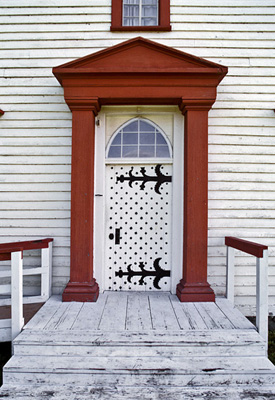Craigflower Manor House National Historic Site of Canada
Victoria, British Columbia

Detail view
© Parks Canada Agency / Agence Parcs Canada.
Address :
110 Island Highway, View Royal, Victoria, British Columbia
Recognition Statute:
Historic Sites and Monuments Act (R.S.C., 1985, c. H-4)
Designation Date:
1964-10-27
Dates:
-
1853 to 1856
(Construction)
-
1853 to 1856
(Significant)
Event, Person, Organization:
-
Kenneth MacKenzie (farm bailiff)
(Person)
-
Hudson’s Bay Company
(Organization)
-
Puget's Sound Agricultural Company
(Organization)
Other Name(s):
-
Craigflower Manor House
(Designation Name)
Research Report Number:
1964-037
Plaque(s)
Existing plaque: 110 Island Highway, Victoria, British Columbia
In 1853-56, Kenneth McKenzie built this house for the Puget's Sound Agricultural Company, a subsidiary of the Hudson's Bay Company. As the overseer's residence it was the focus of Craigflower Farm, the senior of four farms on the island whose employment of colonists marked the transition from fur trade to settlement on the northwest coast. When McKenzie was manager, the Manor was a centre of social life for Victoria residents and Royal Navy officers from Esquimalt. Built mainly from native materials, it is a fine example of early domestic architecture in Western Canada.
Description of Historic Place
The Craigflower Manor House was built between 1853 and 1856, mainly from materials cut, hewn and milled in the vicinity. It is a two-storey timber frame building with a moderately-pitched gable roof, end chimneys, and a classically-inspired symmetrical five-bay plan with a pedimented central entrance. The manor house occupies a parcel of land overlooking the Gorge Waterway in the Greater Victoria district. The designation refers to the house on its legal lot.
Heritage Value
Craigflower Manor House was designated a national historic site in 1964. Built for the Puget’s Sound Agricultural Company, it is a fine example of early domestic architecture in Western Canada.
As the residence of bailiff Kenneth MacKenzie, it was the focus of Craigflower Farm, the oldest of four farms on Vancouver Island whose employment of colonists marked the transition from fur trade to settlement on the northwest coast. This transitional stage is reflected vividly in the design of the Manor House, which combines Hudson’s Bay Company construction systems with Scottish architectural influences and craftsmanship adapted to the use of local materials.
Source: Historic Sites and Monuments Board of Canada, Minutes, October 1964.
Character-Defining Elements
The key elements relating to the heritage value of this site include:
its site, defined as the land bordered by Admirals and Craigflower Roads, and the Gorge Waterway, and the prominent position of the house on a grassy knoll; the unobstructed view of the house from Admirals and Craigflower Roads, Craigflower Bridge and the waterway; its materials and forms, all of which are expressive of a significant phase in the historical development of western Canada, including: Hudson’s Bay Company post-and-groove framing on ground floor and mortice-and-tenoned timber frame system on second floor, Georgian five-bay plan, pedimented entrance, moulded window heads and window pediments, the front door and its hardware, gable detailing, fenestration, rough-sawn horizontal clapboard siding, brick chimneys; central hall interior floor plan and surviving historic interior features and fixtures.